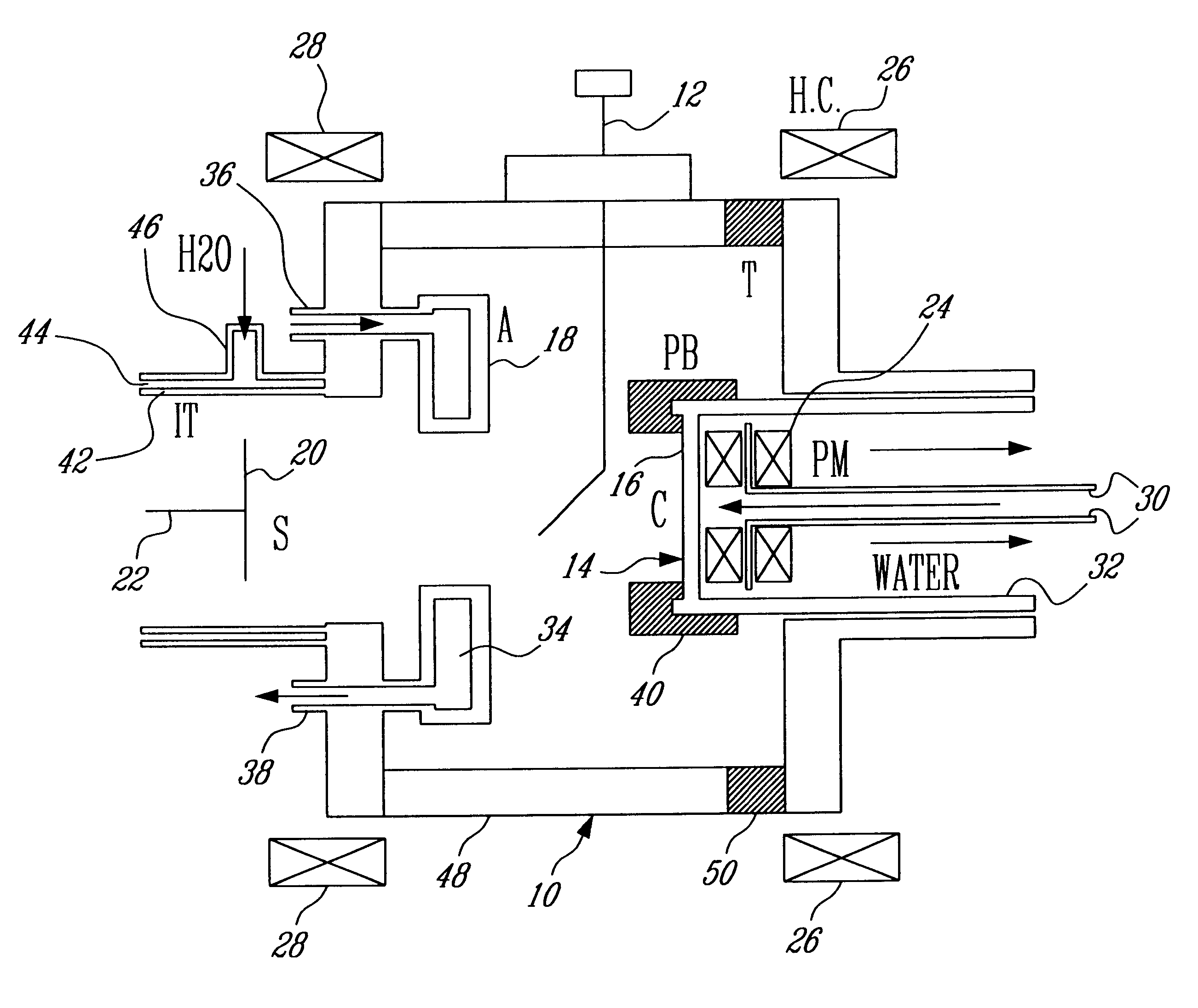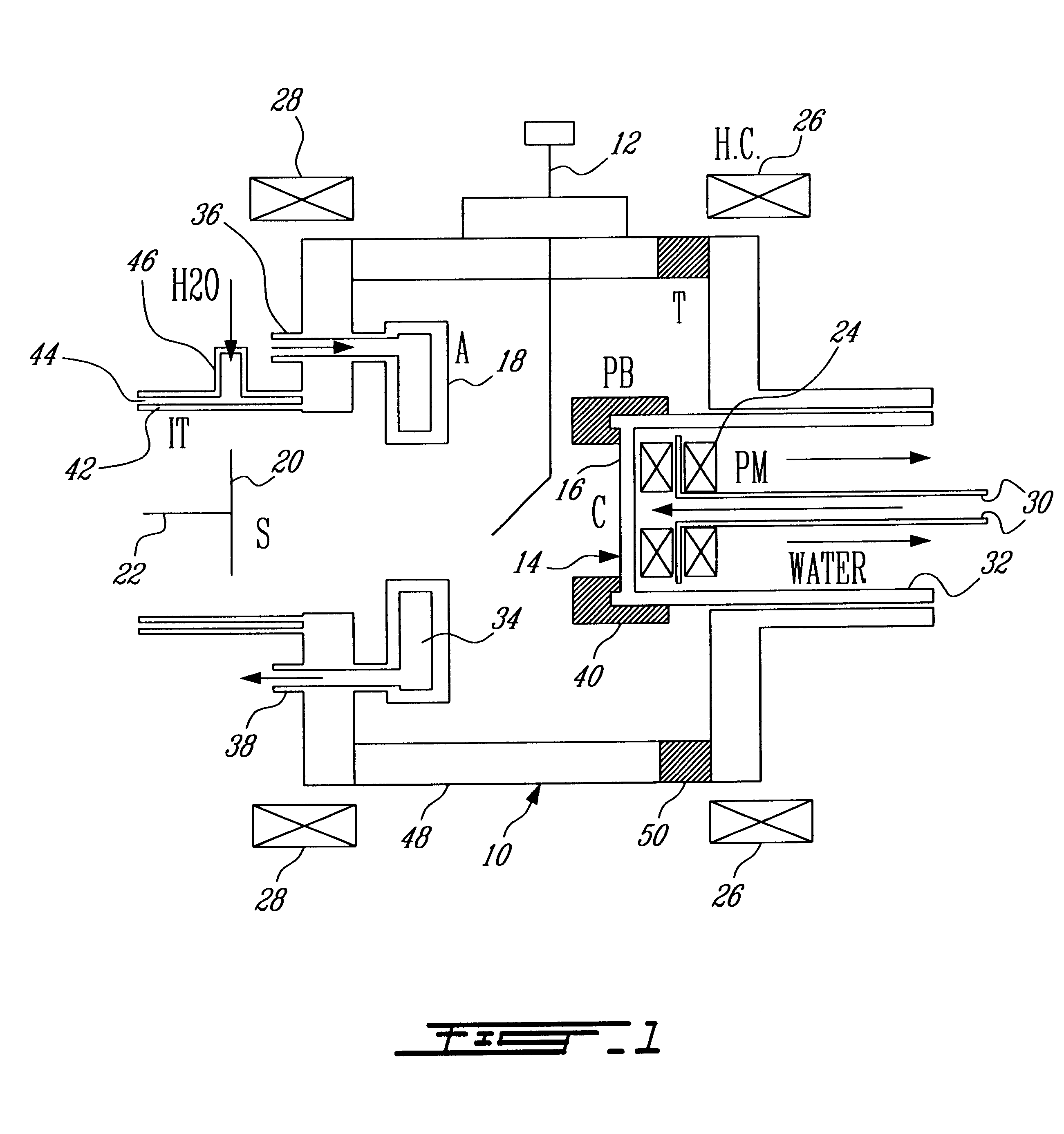Particle-free cathodic arc carbon ion source
a carbon ion source and cathodic arc technology, applied in the direction of ion implantation coating, diaphragms, electrodes, etc., can solve the problems of reducing the output plasma flux and hence reducing the complexity of the source, and reducing the deposition rate and system efficiency
- Summary
- Abstract
- Description
- Claims
- Application Information
AI Technical Summary
Benefits of technology
Problems solved by technology
Method used
Image
Examples
Embodiment Construction
With further reference to FIG. 1 a vacuum chamber 10 is connected to a source of vacuum (not shown). An arc igniter 12 is mounted in chamber 10.
A graphite cathode 14 having a target surface 16 and a generally annular anode 18 are mounted in chamber 10. A substrate 20 to be coated is supported by a holder 22 in opposed facing relationship with target surface 16.
Permanent magnets 24 are disposed behind cathode 14 and Helmholz coils 26 and 28 are disposed radially outwardly of chamber 10.
Cathode 14 is water cooled by water flow along an inner conduit 30 and an outer conduit 32.
Anode 18 is water cooled by water flow along an annular conduit 34 having an inlet conduit 36 and an outlet conduit 38.
Cathode 14 is mounted in an insulating casing 40 which defines a passive border.
Cathode 14 and anode 18 are connected to an arc power supply (not shown).
The tubular wall 42 around substrate 20 may also be water cooled by a flow passage 44 having an inlet 46.
The wall 48 of chamber 10 may include i...
PUM
| Property | Measurement | Unit |
|---|---|---|
| Angle | aaaaa | aaaaa |
| Angle | aaaaa | aaaaa |
| Angle | aaaaa | aaaaa |
Abstract
Description
Claims
Application Information
 Login to View More
Login to View More - R&D
- Intellectual Property
- Life Sciences
- Materials
- Tech Scout
- Unparalleled Data Quality
- Higher Quality Content
- 60% Fewer Hallucinations
Browse by: Latest US Patents, China's latest patents, Technical Efficacy Thesaurus, Application Domain, Technology Topic, Popular Technical Reports.
© 2025 PatSnap. All rights reserved.Legal|Privacy policy|Modern Slavery Act Transparency Statement|Sitemap|About US| Contact US: help@patsnap.com



